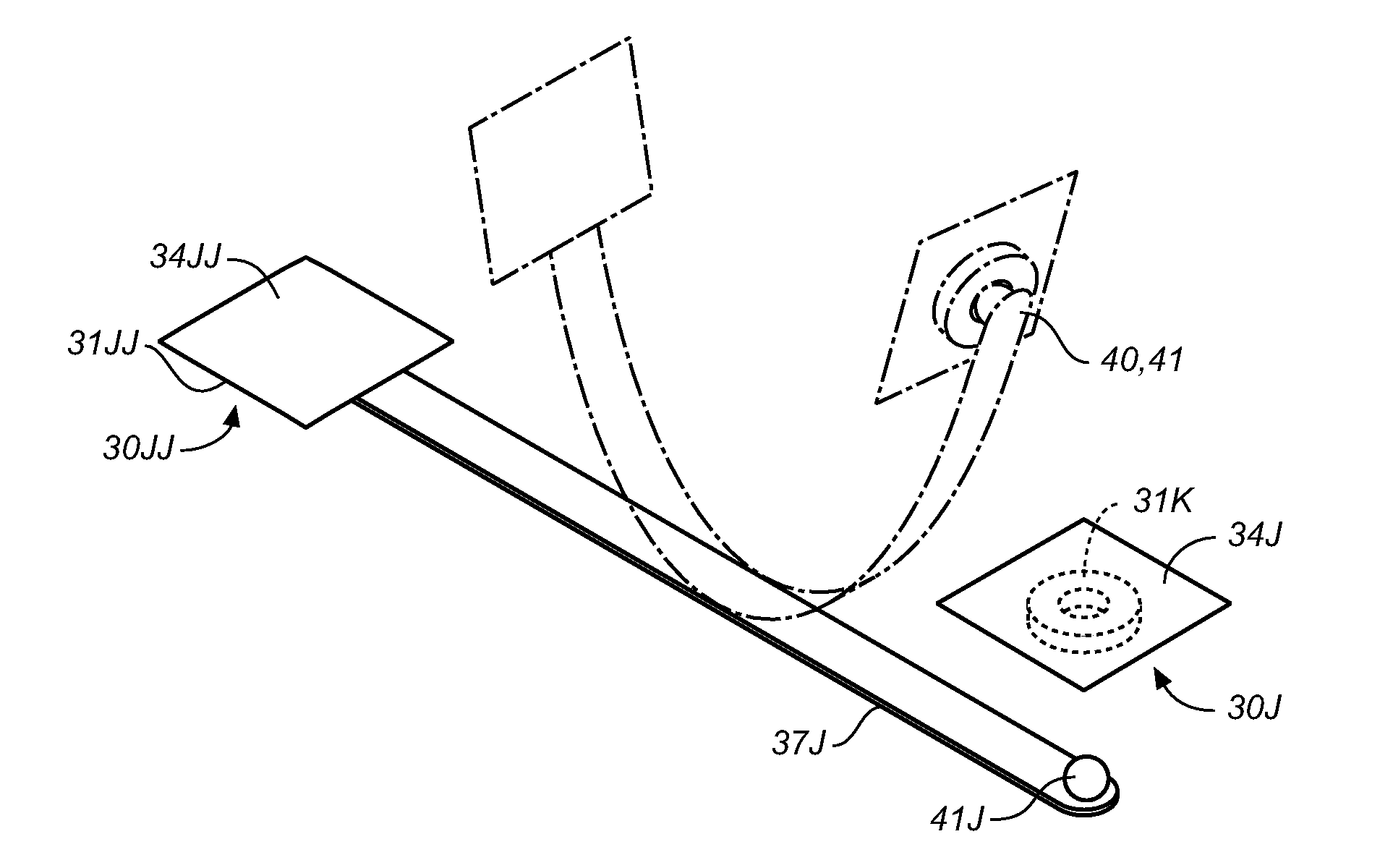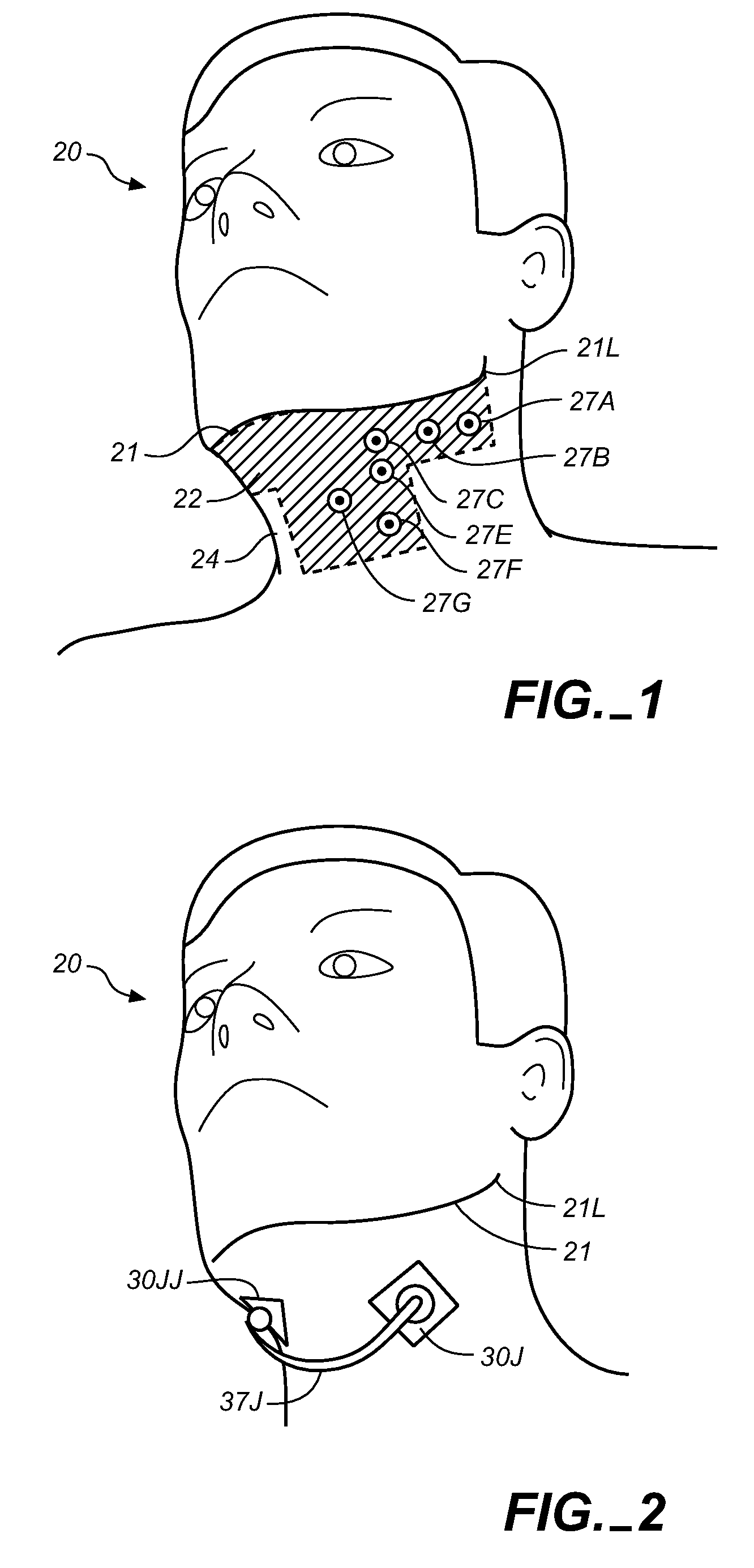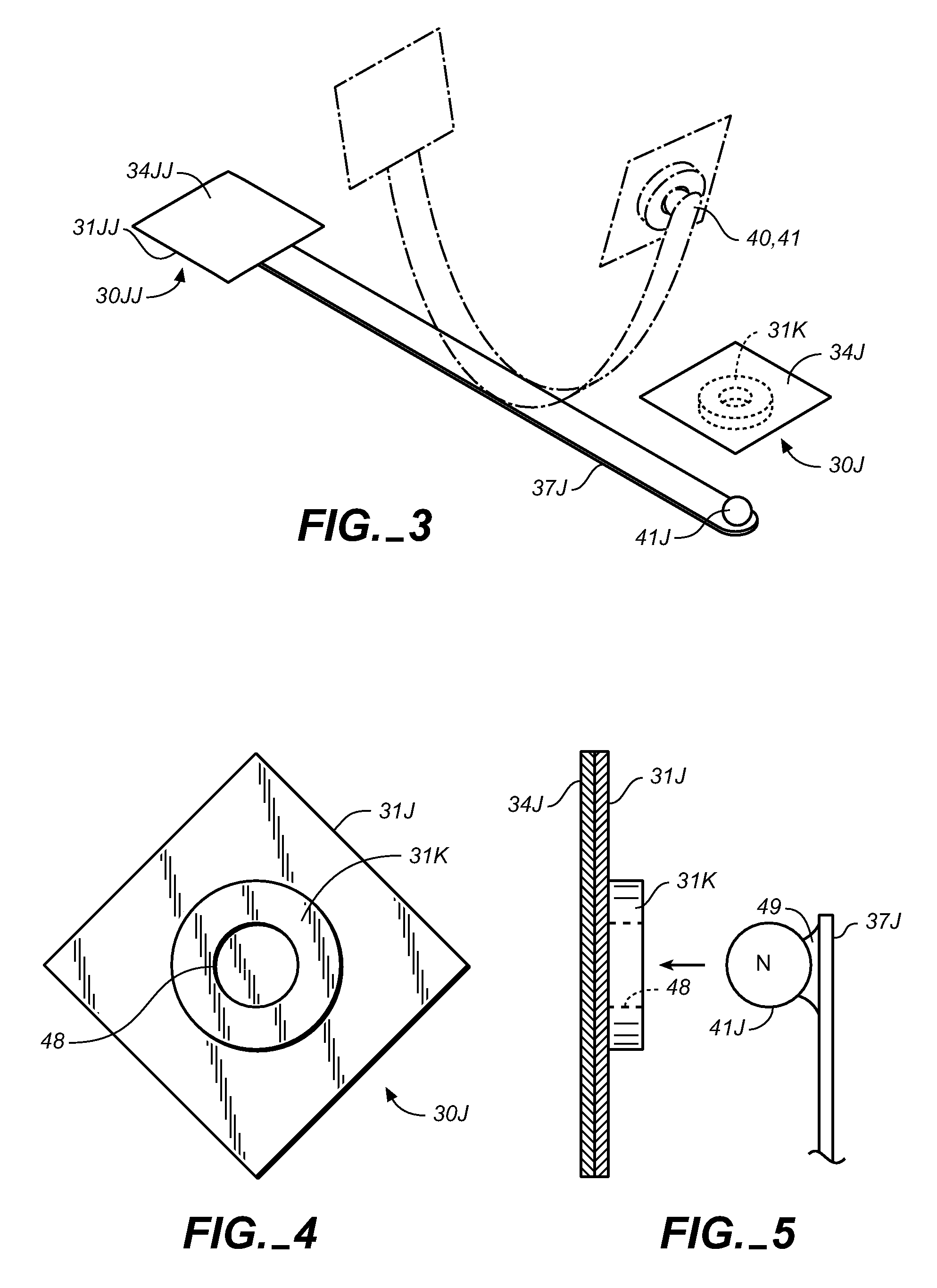Method and apparatus for treatment of snoring and sleep apnea
a technology for snoring and sleep apnea, applied in the field of health and medical devices, can solve the problems of snoring, reducing the quality of sleep, and restricting or blocking the passage of people, and achieve the effect of removing snoring
- Summary
- Abstract
- Description
- Claims
- Application Information
AI Technical Summary
Benefits of technology
Problems solved by technology
Method used
Image
Examples
Embodiment Construction
[0043]The instant application is a continuation-in-part of U.S. Utility patent application Ser. No. 10 / 866,058, filed Jun. 10, 2004 (Jun. 10, 2004), which application is incorporated in its entirety by reference herein.
[0044]Referring now to FIGS. 1 through 15, wherein like reference numerals refer to like components in the various views, there is illustrated therein a new and improved anti-snoring device.
[0045]FIG. 1 shows a human 20 with a neck 24. The lower edge of the jawbone is 21 (hereafter called the “jawbone line”). The left end of the jawbone is 21L. There is a “T” shaped area 22 below the jawbone 21 that will be called the “throat stimulation area”. Within the throat stimulation area there are several points collectively designated as 27 that will be called “responsive points”. FIG. 1 illustrates responsive points 27 A, B, C, E and F that are on the left side of the neck. Each of these points has a comparable point on the right side of the neck, but points on the right sid...
PUM
 Login to View More
Login to View More Abstract
Description
Claims
Application Information
 Login to View More
Login to View More - R&D
- Intellectual Property
- Life Sciences
- Materials
- Tech Scout
- Unparalleled Data Quality
- Higher Quality Content
- 60% Fewer Hallucinations
Browse by: Latest US Patents, China's latest patents, Technical Efficacy Thesaurus, Application Domain, Technology Topic, Popular Technical Reports.
© 2025 PatSnap. All rights reserved.Legal|Privacy policy|Modern Slavery Act Transparency Statement|Sitemap|About US| Contact US: help@patsnap.com



